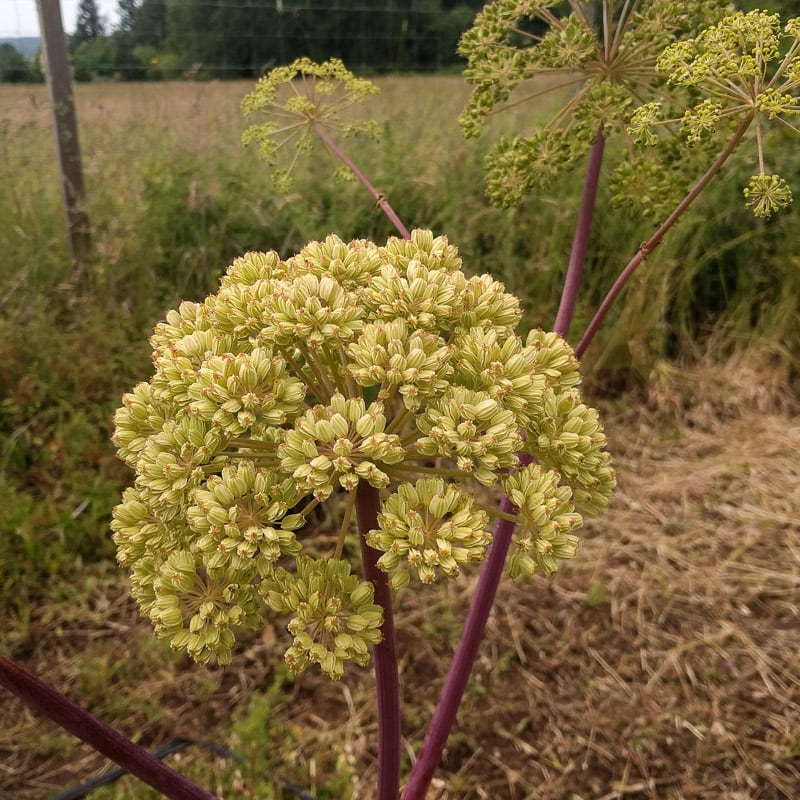Angelica (Organic)
Angelica archangelica. 208-365 days. Biennial in zones 4-9.
Angelica is one of those plants that seems ancient and archetypical. Plants are reminiscent of cow parsnip with similar large white-flowered umbels. Big, lobed leaves atop long hollow stems have a perfumed, sweet scent and flavor. Medicinal, ornamental and edible, Angelica is a plant that has been associated with humans for a long time. The giant flowers are full of nectaries that attract many beneficial insects such as honey bees, predatory wasps, hover flies and lady bugs. In the early summer, the flowering stalks are a favorite perch for Lazuli Bunting songbirds on our farm. Flowers can be used fresh or dried, giving a bold accent to bouquets. The stalks can be peeled and candied for a delicious treat. A true biennial that may take a few years to flower if not sown early in the spring. Herbally, Angelica is known to be energizing, warming and stimulating. Traditionally used to treat colds and respiratory issues. The roots are used to flavor gin and the seeds are used to flavor liqueurs such as Chartreuse, many bitters, and even Vermouth. Angelica is a truly useful and beautiful plant. May self seed. For best results, refrigerate seed until planting.
Angelica seed is known to have high dormancy and benefits from cold stratification and light to germinate. Total Viability is printed on the seed packet and includes the germination percentage plus the dormant seed percentage as determined by an independent laboratory. Dormant Seed is the portion of a seed sample that does not germinate during the short time period of the seed test, but is determined to be alive and respiring. Dormant seed is likely to germinate with cold stratification and/or longer germination times.
Requires cold stratification to germinate. Surface sow in late winter/ early spring, or moisten then refrigerate seeds for 30 days. Germination may be slow and erratic and seeds are short-lived. Transplant to part shade in fertile soil when plants are 3” tall, to 18” centers. Keep well fertilized, watered, and cultivated.
Seed Saving
May self-sow if allowed to set seed. Collect seeds in second year for replanting or culinary use. Cut seed stalks when seeds are dry, thresh by hand, dancing, or hitting seed stalk against sides of bucket. Winnow to clean.




What others are saying
There are no contributions yet.